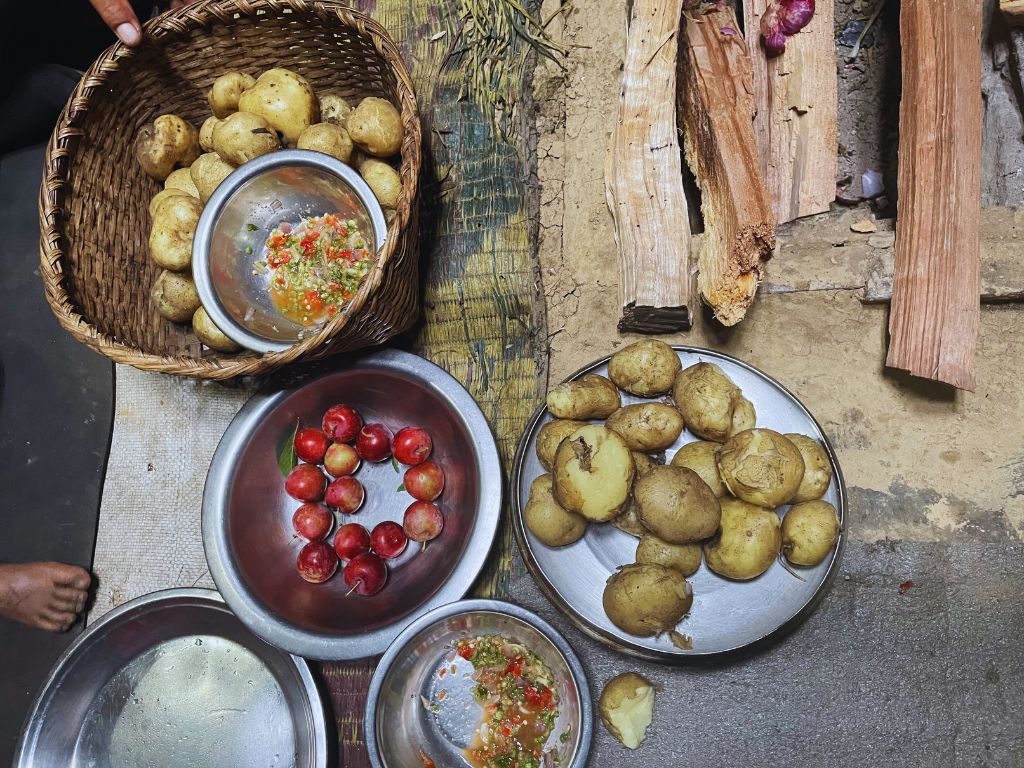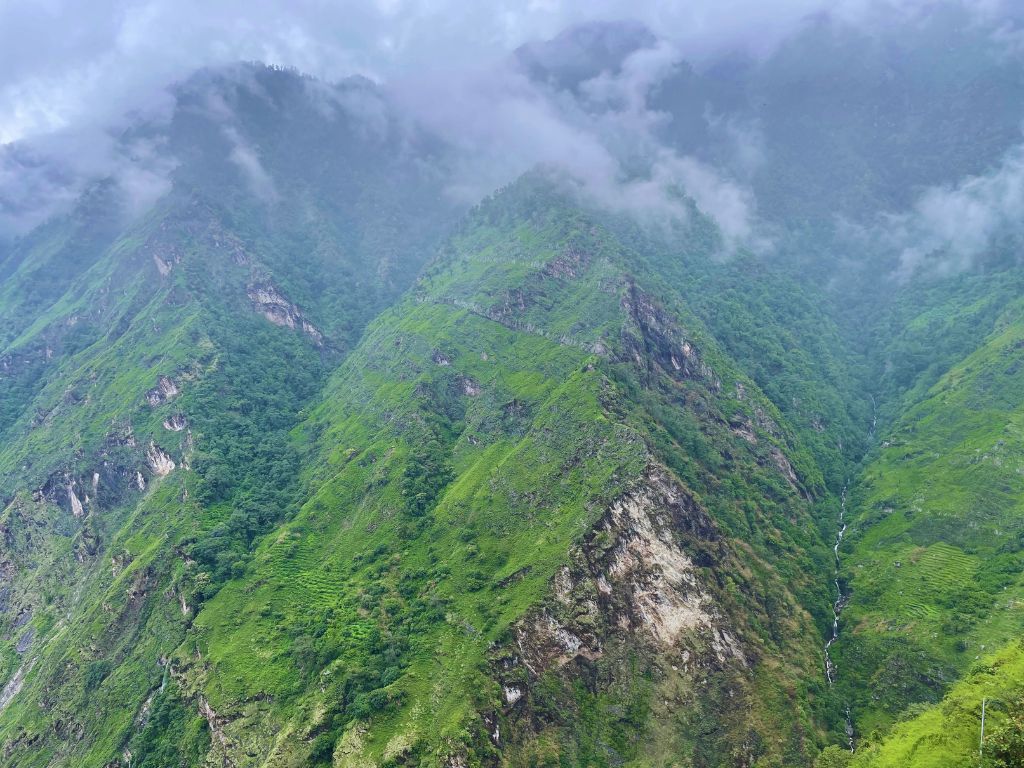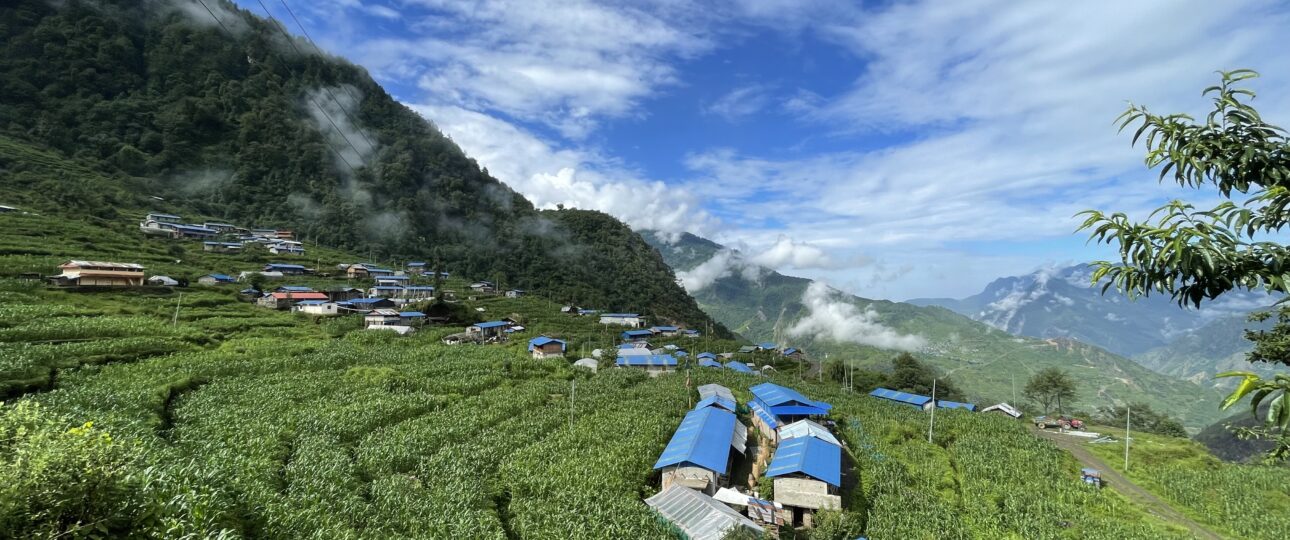In the embrace of the Himalayas, where time dances gently and nature whispers its secrets, lies the Ruby Valley—a sanctuary of serene beauty and cultural richness in remote Dhading District of Nepal. Among its hidden treasures is the village of Puru, a place where the spirit of adventure intertwines with the warmth of human connection. Here, the Puru Trek unfolds, inviting you to experience a journey that transcends mere footsteps.
Here, the Tamang community welcomes you with open hearts, their smiles radiant and genuine. You’re invited into their homes, where the aroma of traditional dishes wafts through the air. Sharing a meal becomes a sacred ritual, a moment where cultures blend and stories are exchanged.
Getting There
Your adventure can commence in two picturesque locations: Dhunche or Dhading Besi, a lively hubs with the hustle and bustle of modern life. Puru Village is accessible by road recently, however the road from Dhading besi usually is only accessible till Borang Village or Darkha Phedi during the monsoon seasons. The roads are frequently affected by landslides, make it difficult to maintain.
A Cultural Mosaic
In Puru, every corner tells a tale. You wander through narrow paths lined with vibrant prayer flags fluttering in the breeze, each one carrying a silent prayer for peace and happiness. The villagers go about their daily routines, tending to their crops and weaving intricate textiles, a dance of tradition passed down through generations.
You take the time to sit with an elder, whose eyes hold the wisdom of the ages. As he shares stories of his ancestors and the spirit of the land, you feel a deep connection—a sense of belonging that transcends borders. More than a trek; it’s also journey into the soul of humanity.


Nature’s Symphony
As dawn breaks over Puru, Ganesh Himal and surrounding peaks are bathed in a soft golden glow. You rise early, drawn to the hills for a sunrise that promises to be unforgettable. Standing on the ridge, you witness the sun emerge, painting the sky in hues of orange and pink, a celestial artist at work. The breathtaking view ignites a fire within, a reminder of nature’s boundless beauty.
Throughout the trek, the Ruby Valley reveals its treasures. The chirping of birds, the rustling of leaves, and the distant sound of water cascading down rocks create a symphony that resonates in your heart. With each step, you discover not just the landscape, but also the essence of life itself—fragile, beautiful, and ever-changing
Best time to Trek Puru
The best time to embark on this adventure is during the spring and autumn months when the landscape comes alive in a riot of colors. In spring, rhododendrons bloom, draping the hills in vibrant shades, while autumn brings a crispness to the air, perfect for trekking. Each season offers its own charm, inviting you to return time and again.
Weather and Temperature in Puru, Ruby Valley
Puru, located in the Ruby Valley of Nepal, experiences a diverse range of weather conditions throughout the year, influenced by its elevation and geographical features. Here’s a summary of what to anticipate:
Spring (March to May)
- Temperature: Daytime temperatures range from 10°C to 20°C (50°F to 68°F), while nights can be cooler, dropping to around 5°C (41°F).
- Weather: This season brings mild weather with blooming rhododendrons and clear skies. It’s one of the best times for trekking, with pleasant temperatures and vibrant landscapes.
Summer (June to August)
- Temperature: Daytime highs can reach 25°C (77°F), but nights may still drop to about 10°C (50°F).
- Weather: This is the monsoon season, characterized by heavy rainfall, particularly in July and August. Trails can become muddy, and some areas may be difficult to access, but the lush greenery is breathtaking.
Autumn (September to November)
- Temperature: Daytime temperatures are typically between 15°C to 25°C (59°F to 77°F), while nights can get chilly, around 5°C (41°F).
- Weather: This season is marked by clear skies and stable weather conditions, making it ideal for trekking. The post-monsoon landscape is fresh and vibrant, offering stunning views of the surrounding peaks.
Winter (December to February)
- Temperature: Daytime temperatures generally range from 5°C to 15°C (41°F to 59°F), while nights can be quite cold, dropping to 0°C (32°F) or lower.
- Weather: Winter brings cold temperatures and occasional snowfall. The trails can be icy, and some trekkers may find the conditions challenging. However, the scenery is stunning, with snow-capped mountains and clear skies.
Tips for Trekking in Puru
- Layering: Dress in layers to adapt to the changing temperatures throughout the day.
- Rain Gear: If trekking during the monsoon, ensure you have waterproof clothing and gear.
- Acclimatization: Be mindful of altitude sickness, especially if you’re trekking to higher elevations. Take time to acclimatize properly.
Understanding the weather patterns will help you plan your trek to Puru effectively, ensuring a safe and enjoyable experience! If you need specific advice on planning your trek, Mountmandu can assist with up-to-date information and guidance.
Final Say
The Puru Trek in Ruby Valley is more than a physical journey; it’s a pilgrimage of the heart. Each step taken along the winding paths connects you to the earth, to the people, and to the stories that shape this beautiful corner of the world. In Puru, you find not just adventure, but a deep sense of belonging—a reminder that the most profound connections often lie beyond the horizon.
So, lace up your boots and embark on this enchanting journey, where the mountains beckon, the valleys whisper, and the spirit of adventure awaits. Let Mountmandu guide you through this breathtaking tapestry of nature and culture, creating memories that will linger long after the trek is over. Embrace the magic of Puru, and let its beauty transform your soul.
Travel Listings

